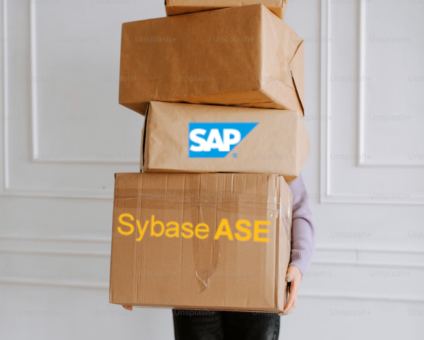Physical retail is still where the magic happens. According to new research by RSR, 85% …
![]()
Cloud-native POS platform for seamless omnichannel customer experience.
![]()
A single hub for all promotions campaigns.
- Omnichannel ExperienceCreate seamless customer experiences
- Device IndependencePOS agnostic to form factor or operating system
- Self-CheckoutDo more with fewer associates
- Mobile StoreLeverage POS from anywhere
- POS on the GoEnable associates to sell outside of the store
- Unified PromotionsStreamline and simplify promotion workflows
- CX ConnectAllow customers to engage with POS during checkout
- Composable CommerceCreate the store experience you want
![]()
The most advanced synchronization solution for databases and file systems.
![]()
Data configuration and batch automation across different disparate systems and vendors.
-
Data Replication
- Multi-tier DistributionReplicate thousands of remote locations
- Cloud Database ReplicationCapture live changes from on-premise to the cloud
- High Availability and Load BalancingEnsure 24/7 access to data and scale efficiently with demand
- Analytics and ReportingCapture the whole picture with real-time reporting
- Multi-masterMaintain consistency of data in a peer to peer setup
- Data WarehouseReplicate live and historical data to a warehouse
- MigrationsConduct live data migration with no downtime
-
-
Data Integration
- Master Data ManagementChanges propagate across the entire system, allowing you to maintain a centralized view of all parts of your core business entities.
- Application IntegrationReduce dependencies, complexity, and risk to build a high-performance, data-driven application.
- Web ServicesIntegrate multiple systems using web services or build a business application using a service-oriented architecture.
- Data WarehouseIntegrate disparate data from multiple systems so you can transform data for better business intelligence and reporting.
- Data MigrationConduct live data migration during critical server replacements, storage upgrades, and data center relocations—with no downtime.
- ImplementationIntegration consultants help design, develop, and deploy an implementation of our products.
- DevelopmentThe product developers can add features, enhance existing functionality or build support for new platforms.
- TrainingEngage our experienced training resources to gain in-house knowledge and expertise on Jumpmind products.
- SupportLeverage product engineers to resolve issues, fix defects and provide updates or patches.
- Proof of ConceptDetermine the feasibility of implementing our products and get answers to your questions quickly.
Beyond the Hype: What Retailers Really Want from Tech in 2025 Europe’s biggest retail conference …
What a fun week it was for women from across the country who came together …
View all Blog Posts
The new release of SymmetricDS Pro 3.16 data replication software simplifies setup, improves performance, and …
Sybase ASE (more recently known as SAP Adaptive Server Enterprise), announced its end of mainstream …
Azure Blob Storage has become a popular option for storing files in the cloud. And …
View all Blog Posts
Jumpmind Powers Point of Sale and Promotions Execution for Landmark Retail, One of the Largest …
Retail Technology Leader Jumpmind to Enable Mobile Point of Sale and Inventory Management for DTLR/VILLA …
The retailer is charting its next chapter with retail technology modernization to power inspired omnichannel …
View all Customer Stories
43 percent say handling online order returns in-store is a top challenge, and that increases …
After nearly a century in business, the legendary Canadian fashion retailer is retooling to streamline …
The Solution Addresses Modern Retail Challenges with Innovative Promotions to Captivate Inflation-Weary Shoppers NRF 2024, …
View all Blog Posts
![]()
Cloud-native POS platform for seamless omnichannel customer experience.
![]()
A single hub for all promotions campaigns.
![]()
The most advanced synchronization solution for databases and file systems.
![]()
Data configuration and batch automation across different disparate systems and vendors.
-
Data Replication
-
-
Data Integration
-
Retail Retail trends, technology, and enhancing the customer experience
-
Data Thoughts on data matters, dialects, performance, and security
-
Customer Stories How Jumpmind impacts the businesses of our clients
-
Videos & Webinars Watch on demand demos, reviews, and tours of our products
-
Company News Get the scoop on Jumpmind's growth and impact
View all Blog Posts
What’s New in SymmetricDS 3.10
The new release of SymmetricDS Pro 3.10 will help you:
- Initial load target database faster
- Monitor load status and estimate time to completion
- Recover automatically from foreign key and constraint errors
- Deploy loads and changes to Snowflake database
Outgoing Load Screen
The Outgoing Load screen is enhanced to open a tab of details on how the load is configured and its current progress. Each step of the load is shown, including progress to calculate the number of tables and rows before loading begins. Progress by table is shown across panels for pending, active, and completed. Within the active panel, each table is displayed with a progress bar and statistics broken down by extracting, sending, and loading. Overview progress is summarized with a pie chart of loaded versus remaining and an estimated time until completion. A time series chart shows performance of the load as both rows per second and megabytes per second.
Faster Initial Load
Initial and partial loads are faster and more resilient to constraint errors. The queuing step of the load now estimates row counts and batches using system views provided by each database platform, which is considerably faster than getting exact counts for large systems. Extraction queries no longer use SQL functions and format data within code to offload the database server. When multiple targets are loaded simultaneously, the extract service will extract common tables only once to improve overall performance. For Oracle and Tibero databases, tables with large objects (LOBs) receive two passes to optimize extraction for data under the 4k limit. These databases also have new loaders using SQL*Loader and tbLoader to bulk load into tables as fast as possible. Indexes and constraints on target tables are deferred until after the data load, which improves load times. If the user wants to leave constraints on tables instead, the load can automatically handle any constraint errors that occur due to timing of table extraction on a busy system undergoing changes.
Enhancements to Change Data Capture
The fallback operations that automatically resolve constraint violations are enhanced to handle more cases and to record an error only after attempting resolution. Complex chaining of exceptions are handled to get data back into sync, including primary key, unique key, parent missing, and child dependent violations. To maintain performance of the change capture subsystem, a more aggressive purge algorithm is used to make more frequent passes that reduce the size and overhead of runtime tables. If PostgreSQL 9.5 or newer is being used, insert performance is improved using the new “on conflict” option for detecting conflicts. For Oracle and Tibero, large object (LOB) routing and extraction automatically optimizes for data under the 4k limit.
Snowflake Database
Replicate data into the Snowflake database, a data warehouse based in the cloud for data storage and analytics. Use initial loads, partial loads, and change data capture from a source relational database to target data into Snowflake and keep it in sync. The bulk loader integrates with Snowflake managed storage, AWS S3, and Azure Storage Account to quickly populate the data warehouse.
















